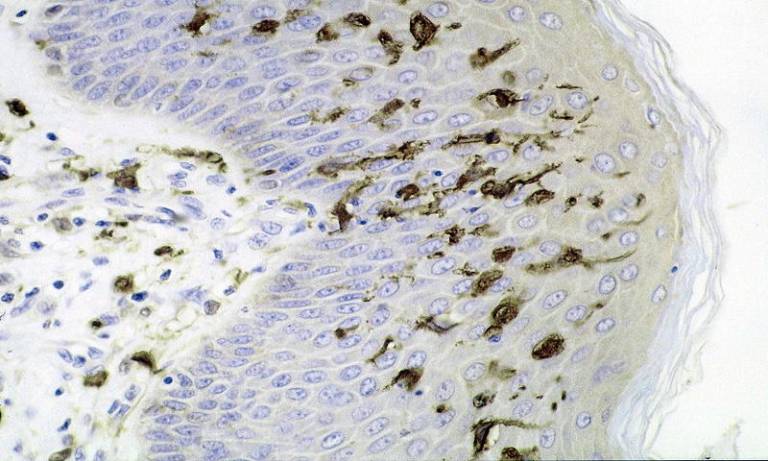Bennett Lab study shows how damaged innate immune cells in the skin are replenished
28 August 2019
A recent study by the Bennett Lab has shown how monocytes replenish damaged Langerhans cells.

The paper, ‘A wave of monocytes is recruited to replenish the long-term Langerhans cell network after immune injury,’ published in Science Immunology, looked at the consequences of immune damage and loss of Langerhans cells (LC).
LC are a network of antigen presenting cells that sit in the outer layer of the skin, the epidermis. They are crucial for maintaining a balance between the activation of immunity against infection, but making sure that we don’t react to everyday minor injuries.
LC are present in the skin before birth and become sealed in the skin throughout life. However, when a patient is being treated for cancer with a bone marrow transplant, T cells enter the skin and kill the LC there.
The Bennett lab asked the question “how can the LC be repaired in these patients if the original cells came from the embryo before they were born? Their research has shown that a population of immune cells called monocytes can enter the skin and change from being short-lived cells to becoming long-lived replacement LC.
This suggests that our need to carefully control immune responses in the skin so important that, even if a different cell comes in to replace the LC network, signals in the epidermis make sure that those cells can function in the same way as the original LC. Understanding this will give us insights into how immune protection in the skin can be lost in some diseases, and how we might be able to fix it.
Links
- Read the paper: A wave of monocytes is recruited to replenish the long-term Langerhans cell network after immune injury (Science Immunology)
- Profile: Dr Clare Bennett
Image
- Credit: 'Section of skin showing large numbers of dendritic (Langerhans) cells in the epidermis. M. ulcerans infection, S100 immunoperoxidase stain’ by Haymanj via Wikicommons [Public domain]
 Close
Close

